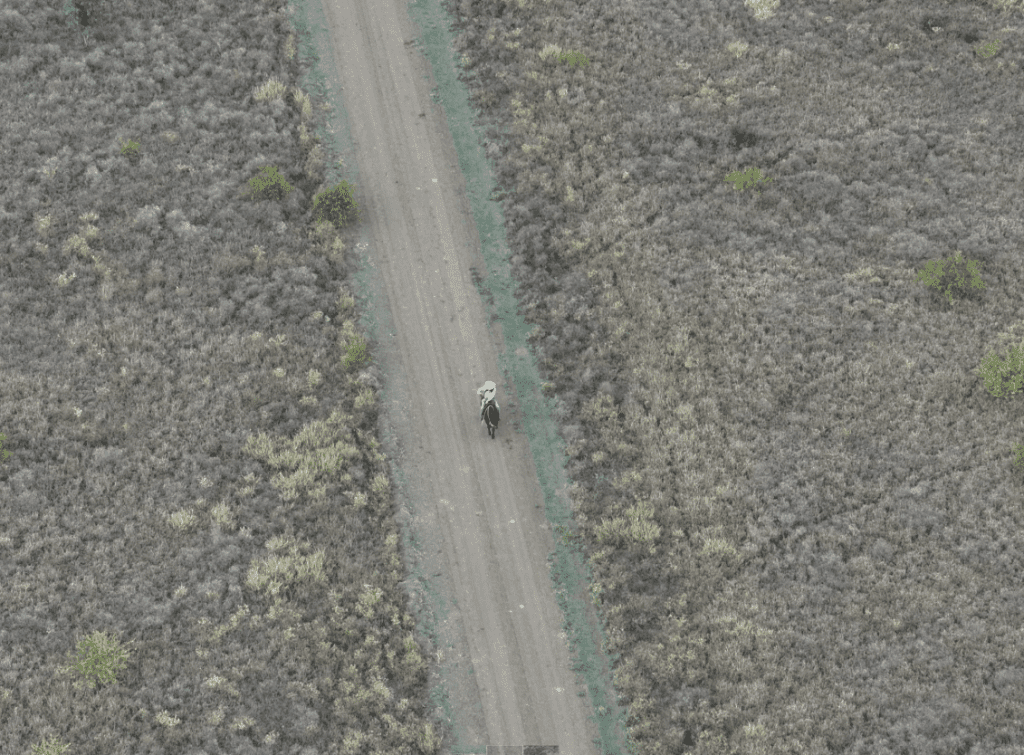31 JULY 2025: Night-time thermal-image drones were used for the first time to muster fugitive cattle at Australian Country Choice’s Moray Downs property last week.
Four nights of drone-mustering outwitted wily bulls and cows hiding in brigalow regrowth on the Clermont district property.

Above: A single elusive animal detected by the night-time thermal imaging from the drone.
Detected by their body heat, the animals were mustered using two-way radio between drone operator Jamie Warren and waiting stockhands.
Jamie said each muster involved about 35 minutes “poking about in the air” using the Mavic 3 Enterprise drone which has a range of 3kms from takeoff.
CEO Anthony Lee called it “an exciting use of technology not only to ensure clean musters, but also to improve safety outcomes. We are regularly using drones on multi properties now”.
About 20 animals were flushed out by the contractor, completing the muster of 11,500 weaners, cows and bulls, most of them destined for ACC properties of Barkly Downs, Babbiloora and Tungamah.
Property manager Alistair Potts said the animals – a mix of black bulls and Brahman-cross – were accustomed to hiding from heli-mustering in vegetation up to 4m high.
“They’re hard to see,” he said. “The black bulls especially, they learn bad habits faster. They get hotter faster, so they stop in the shade. They’ve learned to stand still under a tree and a chopper flies past them.”

Above: Stockhands followed instructions on two-way radio to flush out the animals.
Grazing near a mine site makes the cattle fairly immune to noise, he said. “They wouldn’t have known what a drone is.”
Nevertheless, using the drones required the smarts: “The style of beast we were chasing – those old bulls – you’ve only got one go at them, or you lose them. They learn pretty quick,” Alistair said.
He was surprised by the drone’s range and sensitivity – being able to detect an animal from 120m up. “It’s got a hell of a range – a lot further than what I though Jamie would fly at,” he said.
Alistair said the thermal drone had advantages of heli-mustering, notably the cheaper costs. “I reckon for the cost of a chopper, say $500 an hour to go out there and try to find those bulls … I don’t think you’d ever find them.
“The drone can muster the cattle in the dark so that the horses can pick them up at daylight and get an earlier start. It beats the heat and makes it easier on animals and staff all round”.
